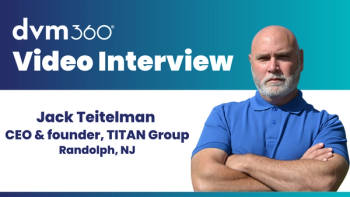
Letter to dvm360: Take a (permanent) break from brachycephalic breed depictions
A reader asks us to stop showing these suffering souls as representatives of normal.
Click on the image to read the article featuring the AVMA's position on responsible breeding.I'm proud to see that the AVMA has followed the lead of the British Veterinary Association in issuing a statement supporting “responsible breeding” of companion animals (
Some of us have spent decades as voices crying in the wilderness, made to feel like fringe-element fanatics (even by other veterinarians!) because we don't see brachycephalic dogs or cats as “cute” but instead as the grotesque distortions that they are-innocent lives trapped in deformed bodies, suffering from health problems for life due to human whim and vanity. Anyone deliberately breeding deformed children and calling them “cute” would be decried as a monster. The call for breed anatomy reform is long overdue.
The AVMA has asked veterinarians to join in “educating breeders, companion animal owners and the public.” In that spirit, I wish to point out to you that I count eight separate headers and ads in the latest issue of the March 2017 issue of dvm360 magazine that are accompanied by photos of brachycephalic breeds. These are your own ads for your own services and don't include additional ads by vendors, many of which also use photos of brachycephalic breeds.
I know that your layout editors choose their photos from a collection supplied by a commercial photographer and that their primary concern is with making dvm360 magazine attractive as well as informative. However, in the spirit of the AVMA's call to action, I would strongly urge your publication to keep it in mind as you choose your ads, your illustrations and your photos.
We humans are powerfully persuaded by visuals. What we see, we believe. Now that our national association has publicly acknowledged that these breeds need reformed standards and more normal anatomy, please do all you can to stop using their images in your ads and articles. Glamour photos of extreme brachycephalic breeds reinforce the delusion that their appearance is “cute” or “normal” or even “desirable.” To some of us, these images are painful and disgusting-as upsetting as if you were using photos of deformed children to sell products or services.
This is bad enough in the lay press. There is a special cognitive dissonance in opening a professional veterinary publication and reading on one page the AVMA call for breed standard reform and then seeing the rest of the pages lavishly illustrated with photos of the exact deformities we are supposed to be condemning.
Chari Wessel, DVM
San Diego, California
Editor's note: We appreciate this reader's concern and have already become more sensitive on this issue, especially in light of
Newsletter
From exam room tips to practice management insights, get trusted veterinary news delivered straight to your inbox—subscribe to dvm360.




